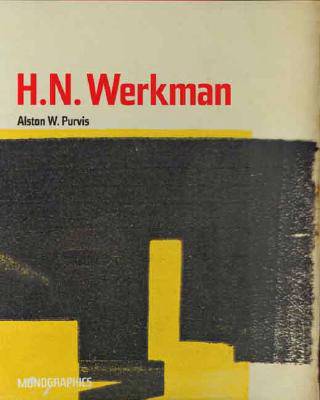
- Afhalen na 1 uur in een winkel met voorraad
- Gratis thuislevering in België vanaf € 30
- Ruim aanbod met 7 miljoen producten
- Afhalen na 1 uur in een winkel met voorraad
- Gratis thuislevering in België vanaf € 30
- Ruim aanbod met 7 miljoen producten
Zoeken
Omschrijving
An extraordinary look at the work of a highly influential avant-garde designer, typographer, and printmaker
Dutch designer and printmaker Hendrik Werkman (1882-1945) is best known for his innovative printing techniques and avant-garde typography. As publisher of De Blauwe Schuitt, a series of underground booklets produced by Jewish dissident poets and writers during the Nazi occupation of Holland, Werkman was imprisoned by German secret police in 1945 and executed without trial just three days before the country's liberation. This generously illustrated book is the first in English to focus on Werkman's remarkable graphic work and fascinating life.
Werkman founded his own printmaking shop in 1908. His self-produced magazine The Next Call waspublished in 1923 and included typographical and other printmaking experiments as well as the designer's own Dadaist poems and texts. Werkman also developed a printmaking process he called "hot printing," a technique incorporating found materials that added repeated design elements directly onto the paper--all without the use of a printing press. Although much of his work was destroyed at the time of his execution, the remarkable examples that remain tell the story of a maverick designer and typographer whose graphic vision was playful, bold, experimental, and unwaveringly optimistic.
Dutch designer and printmaker Hendrik Werkman (1882-1945) is best known for his innovative printing techniques and avant-garde typography. As publisher of De Blauwe Schuitt, a series of underground booklets produced by Jewish dissident poets and writers during the Nazi occupation of Holland, Werkman was imprisoned by German secret police in 1945 and executed without trial just three days before the country's liberation. This generously illustrated book is the first in English to focus on Werkman's remarkable graphic work and fascinating life.
Werkman founded his own printmaking shop in 1908. His self-produced magazine The Next Call waspublished in 1923 and included typographical and other printmaking experiments as well as the designer's own Dadaist poems and texts. Werkman also developed a printmaking process he called "hot printing," a technique incorporating found materials that added repeated design elements directly onto the paper--all without the use of a printing press. Although much of his work was destroyed at the time of his execution, the remarkable examples that remain tell the story of a maverick designer and typographer whose graphic vision was playful, bold, experimental, and unwaveringly optimistic.
Specificaties
Betrokkenen
- Auteur(s):
- Uitgeverij:
Inhoud
- Aantal bladzijden:
- 112
- Taal:
- Engels
- Reeks:
Eigenschappen
- Productcode (EAN):
- 9780300102901
- Verschijningsdatum:
- 10/09/2004
- Uitvoering:
- Paperback
- Formaat:
- Trade paperback (VS)
- Afmetingen:
- 192 mm x 239 mm
- Gewicht:
- 458 g

Alleen bij Standaard Boekhandel
+ 101 punten op je klantenkaart van Standaard Boekhandel
Beoordelingen
We publiceren alleen reviews die voldoen aan de voorwaarden voor reviews. Bekijk onze voorwaarden voor reviews.











